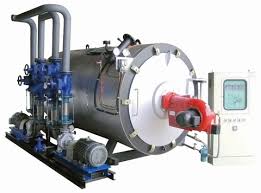
Noy . 21, 2024 20:18 Back to list
boiler steaming
Understanding Boiler Steaming A Critical Component in Industrial Operations
Boiler steaming is a fundamental process in various industries, particularly in power generation, manufacturing, and chemical processing. A boiler functions as a closed vessel that heats water to produce steam, which then drives turbines, powers machinery, or is used for heating purposes. The efficiency and effectiveness of this steaming process are crucial for optimal operations and energy conservation.
The steaming process begins with the introduction of water into the boiler, where it is heated by the combustion of fuel or through electrical means. As the water temperature rises, it transforms into steam, a phase change that requires a significant amount of energy, known as the latent heat of vaporization. The quality of the steam produced—often categorized as saturated or superheated—plays an essential role in determining the overall efficiency of the system. Saturated steam is in equilibrium with water and contains small amounts of liquid, while superheated steam is further heated beyond its saturation point, allowing it to carry more energy.
One of the critical challenges in boiler steaming is maintaining appropriate pressure and temperature levels. These parameters directly influence the boiler’s efficiency and safety. Overpressure can lead to catastrophic failures, while insufficient pressure results in inadequate steam production. Regular maintenance and monitoring, using sophisticated instrumentation, are essential to ensure that boilers operate within their designed parameters.
boiler steaming

Water quality is another vital factor in the steaming process. Impurities within the water can lead to scale buildup on heating surfaces, corrosion, and other operational issues, ultimately affecting the lifespan of the boiler. To mitigate these risks, industries often implement water treatment processes, including filtration and chemical dosing, to maintain high-quality feedwater.
In recent years, innovations in boiler technology have focused on improving steam generation efficiency and minimizing environmental impact. Modern boilers are designed to use renewable energy sources and incorporate advanced control systems that optimize fuel combustion and heat recovery. These advancements not only enhance performance but also contribute to sustainability goals by reducing greenhouse gas emissions and energy consumption.
In conclusion, boiler steaming is a critical process with far-reaching implications in industrial contexts. By ensuring efficient steam generation through careful monitoring of water quality, pressure, and temperature, industries can enhance their operational efficiency and sustainability. As technology continues to evolve, the future of boiler steaming looks promising, with a strong emphasis on energy efficiency and environmental responsibility.
-
Best Steam Boiler Design PDF Free Design Calculation & Diagram Downloads
NewsJun.10,2025
-
Hot Boiler Water Heater Efficient Heating Solutions for Home & Commercial Use
NewsJun.10,2025
-
Steam Boiler Safety Devices High-Quality Protection Valves
NewsJun.10,2025
-
Ultimate Steam Boiler Checklist for Safety & Efficiency
NewsJun.10,2025
-
Optimal Hot Water Boiler Temperature Setting Guide
NewsJun.10,2025
-
Effective Hot Water Boiler Chemical Treatment Protect & Maintain
NewsJun.09,2025
Related PRODUCTS






















